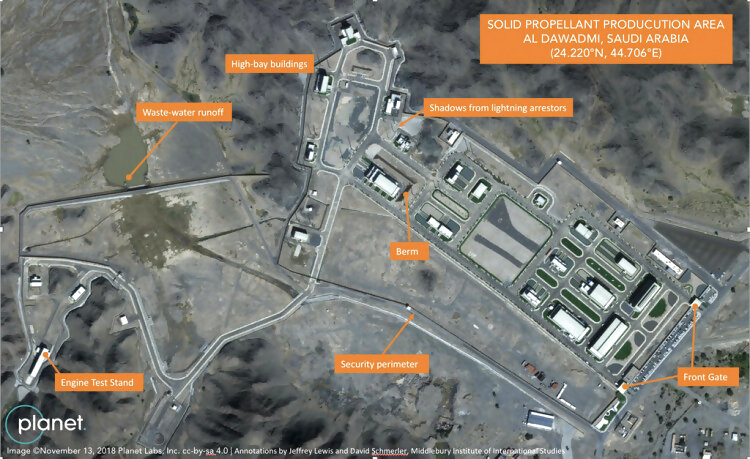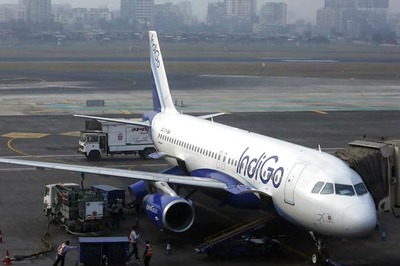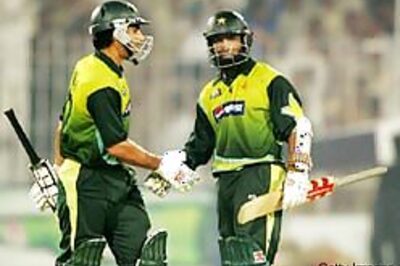
views
Dubai: A military base deep inside Saudi Arabia appears to be testing and possibly manufacturing ballistic missiles, experts and satellite images suggest, evidence of the type of weapons program it has long criticized its archrival Iran for possessing.
Further raising the stakes for any such program are comments by Saudi Arabia's powerful Crown Prince Mohammed bin Salman, who said last year the kingdom wouldn't hesitate to develop nuclear weapons if Iran does. Ballistic missiles can carry nuclear warheads to targets thousands of kilometres away.
Officials in Riyadh and the Saudi Embassy in Washington did not respond to requests for comment.
Having such a program could further strain relations with the U.S., the kingdom's longtime security partner, at a time when ties already are being tested by the killing of Washington Post columnist Jamal Khashoggi and the Saudi-led war in Yemen.
Jeffrey Lewis, a missile expert at the Middlebury Institute of International Studies in Monterey, California, said heavy investment in missiles often correlates with an interest in nuclear weapons. "I would be a little worried that we're underestimating the Saudis' ambitions here," said Lewis, who has studied the satellite images.

The images, first reported by The Washington Post, focus on a military base near the town of al-Dawadmi, some 230 kilometres (145 miles) west of Riyadh, the Saudi capital. Jane's Defence Weekly first identified the base in 2013, suggesting its two launch pads appear oriented to target Israel and Iran with ballistic missiles the kingdom previously bought from China.
The November satellite images show what appears to a structure big enough to build and fuel ballistic missiles.
An apparent rocket-engine test stand can be seen in a corner of the base the type on which a rocket is positioned on its side and test-fired in place. Such testing is key for countries attempting to manufacture working missiles, experts say.
Michael Elleman, the senior fellow for missile defense at the International Institute for Strategic Studies in Washington, also reviewed the satellite photos and said they appear to show a ballistic missile program.
The question remains where Saudi Arabia gained the technical know-how to build such a facility. Lewis said the Saudi stand closely resembles a design used by China, though it is smaller.
Chinese military support to the kingdom would not come as a surprise. The Chinese have increasingly sold armed drones to Saudi Arabia and other Mideast nations, even as the U.S. blocks sales of its own to allies over proliferation concerns. Beijing also sold Riyadh variants of its Dongfeng ballistic missiles, the only ones the kingdom was previously believed to have in its arsenal.
Asked by The Associated Press on Friday about the base, China's Defense Ministry declined immediately to comment.
"I have never heard of such a thing as China helping Saudi Arabia to build a missile base," Chinese Foreign Ministry spokeswoman Hua Chunying said.
Neither Saudi Arabia nor China is a member of the Missile Technology Control Regime, a 30-year-old agreement aimed at limiting the proliferation of rockets capable of carrying weapons of mass destruction, such as nuclear bombs.
Saudi Arabia, along with Israel and the United States, have long criticized Iran's ballistic missile program, viewing it as a regional threat.
Iran, whose nuclear program for now remains limited by its 2015 deal with world powers, insists its atomic program is peaceful. But Western powers have long feared it was pursuing nuclear weapons in the guise of a civilian program, allegations denied by Tehran.
Iran has relied on its ballistic missiles as its own air force is largely made up of pre-1979 fighter jets. Saudi Arabia, on the other hand, has a fleet of modern F-15s, Typhoons and Tornadoes which raises the question of why the Saudis would choose to develop the missiles.


















Comments
0 comment